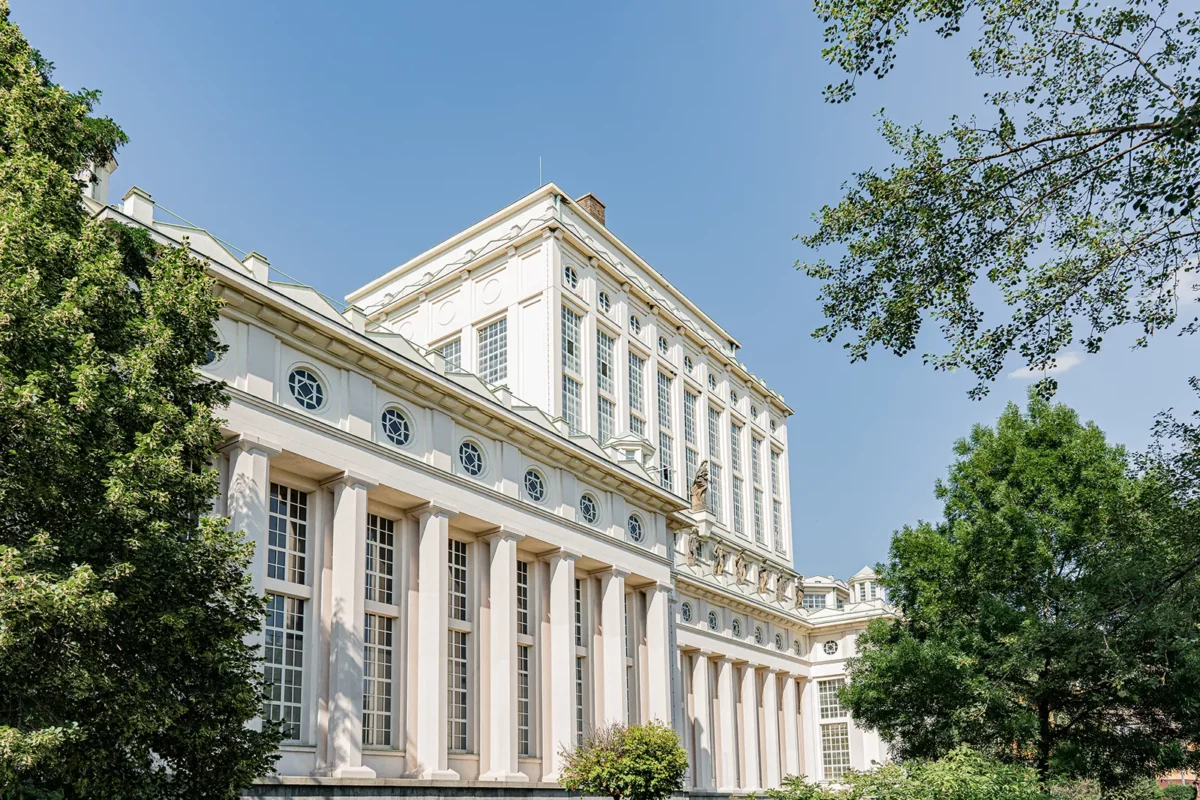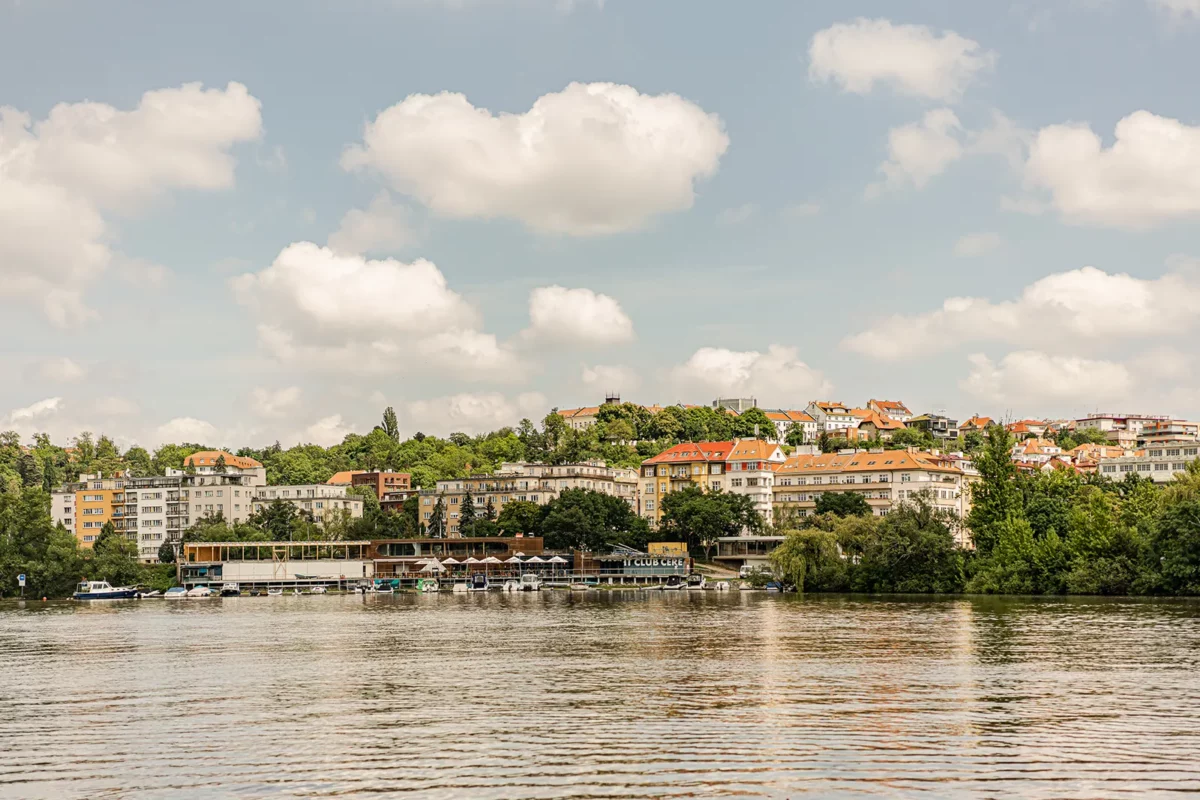The steep Vyšehrad cliffs stand between Podolí and the center of Prague. Many legends are attached to this place and one of them is the story of a knight named Horymír, who was saved from being executed by his trusted horse Šemík, who jumped from the cliffs straight into the Vltava River. His famous jump became the subject of many artworks and Villa Gallery has also been inspired by the site’s past and the fable of Šemík. Jakub Flejšar’s sculpture, entitled Šemík Happy End, represents an alternate ending to the life of this brave equine.
Area Shaped by the Vltava River
Podolí’s character was always characterized by water. Compared to other Prague neighborhoods, the presence of the river and its power is much more noticeable here.
The Podolí harbor and Veslařský Island are located below the Vyšehrad cliffs, and the river is lined with rowing clubs. Other landmarks associated with the element of water include the Podolí Waterworks, the legendary local swimming pavilion, or Žluté lázně. Water lifts and lightens the entire area, creating a place that is a joy to live in.
- Veslařský ostrov
- Marine Sport
- Park Na Topolce
- Park Antonína Engela
- Kostel sv. Michaela Archanděla
- Rotunda sv. Martina
- Bazilika sv. Petra a Pavla
- Táborská brána
- Vyšehradský tunel
- Dvorecký most
- Lékárna v Podolí
- Ústav pro péči o matku a dítě
- Podolská vodárna
- Linka metra C – Vyšehrad a autobusová zastávka
- Podolská vodárna tramvajová zastávka
- Restaurace Podolka
- SOHO Restaurant & Lounge
- Arrosto Ristorante
- Ta Kavárna
- Plavecký stadion Podolí
- TJ Sokol Praha Podolí
- FK Slavoj Vyšehrad
- Žluté lázně
- ZŠ Praha 4, Nedvědovo náměstí
An Alternative Ending to the Fable of the Mythical Horse Šemík
Surrounded by Modernism and Functionalism
The part of Podolí in which Villa Gallery is being built has a terrain that rises towards the Kavčí Mountains. It’s connected to the area known as Old Podolí, originally made up of small rustic abodes clustered around the Church of St. Michael. The local streets are lined with many unique villas by renowned architects from the 1930s and the postwar era, primarily showcasing the Functionalist and Modernist styles.

